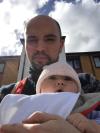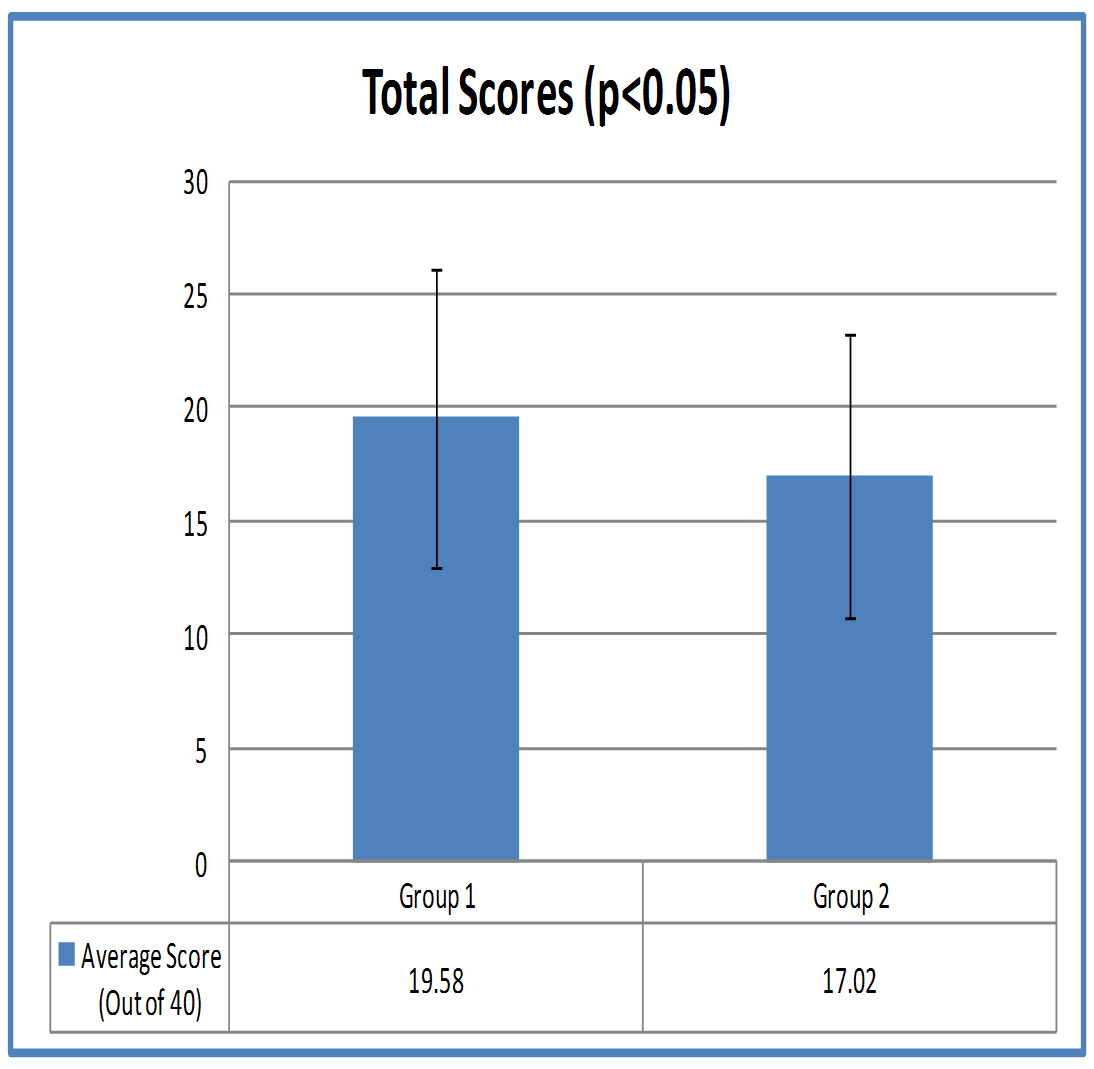| ePOSTER | ||
| Theme: 8BB Teaching and learning: Principles |

|
| Abstract Title |
 |
|
| The use of competitive learning enhances exam performance: an incentivized ECG teaching session | ||

|
Authors: |
Robert Batley Culadeeban Ratneswaran Debasish Banerjee |
Institutions: | St George's Hospital - - London - United Kingdom |
Medical students are inherently competitive, often motivated by a desire to excel and to achieve more than their peers(1). This sense of competition has existed within them before medical school; from exams to applications, these students have had to outscore their competitors just to be given the opportunity to study medicine. This continues into medical school with some students even believing that competition, as opposed to co-operation, is the defining characteristic of medicine(2).
Throughout the course of medical school, institutions run into various problems with teaching and maintaining student attendance and performance. Students have a tendency to become de-motivated as their medical degree progresses and can become prone to apathy during lectures(3). This has been attributed to the repetitive nature of medical learning and the heavy workload and subsequent burnout attributed to a medical degree(4). Absenteeism is also a problem(5), with teachers and institutions constantly having to employ new strategies and programs to ensure continued student motivation and participation.
There is clearly a need for improvements in the way knowledge and understanding are imparted to learners(6,7). To achieve our aim, we looked at the teaching of electrocardiograms as enough is still not known about how best to teach ECG interpretation to medical students. Graduating medical students are expected to possess basic ECG interpretation skills but clinical tutors are yet to agree on the best method for teaching these skills. Some studies have shown that students taught using lecture and workshop based formats scored higher on tests than students who used self-directed learning (8) whilst others have concluded that knowledge assessment was significantly better amongst students receiving self-instruction modules(9). Other studies show that the ideal method of attaining and evaluating ECG interpretation skills is lacking and warrant further investigation(10,11). This research proposes that whatever method is used, introducing competition would enhance learning and performance.
This study hypothesises that utilizing a medical student’s natural competitive instincts might be one method to enhance ECG learning. It focuses on using an andragogical approach as opposed to a pedagogical approach to instilling knowledge and the development of skills. It works from the assumption that all medical students are adults and, even though many may not ever have had a break from formalised education, all are competitive by nature and therefore possess a degree of internal motivation which can be harnessed to achieve an educational outcome(12). Certainly, many medical schools offer competitions and prizes to help draw interest and participation. In fact, some studies have shown improvements in results and participation by instilling an element of competition to their teaching(13,14). In other fields, including business and sport, competition and competitiveness have been utilized to enhance learning and performance(15,16,17).
This study uses and tests competition in ECG teaching as a starting point to further exploration of competition as a driver in medical education more widely.
Methods
A structured ECG teaching session was carried out on 1st year students at a major London teaching hospital. The students had little or no previous ECG teaching. The students were split into two groups and the same lecture was delivered to the two groups with a subsequent examination. A prize was offered to Group 1 for the highest scorer, but not to Group 2. Six ECG topics, consisting of 6 items each, were evaluated: normal ECG, STEMI, NSTEMI, hyperkaelemia, AF and WPW syndrome.
124 students (49% male) participated (69 students in Group 1, 55 students in Group 2). Group 1 (19.58 (6.54)) scored significantly higher in total than Group 2 (17.02 (6.19), p<0.05; figure 1), with greater scores on normal ECG (3.8(1.8)vs(2.7(1.9),p<0.0001), STEMI (3.4(1.4)vs(2.7(1.5),p<0.0001), NSTEMI (3.3(1.7)vs(2.7(1.6), p<0.001), AF (3.6(1.4) vs WPW 3.5(1.5), non-significant) and hyperkaelemia (3.4(1.8)vs3.4(1.4), non-significant).

A difference in test scores was found between the incentivised students compared to those to whom no incentive was offered (see table above) ; this may be because of a heightened competitive response.
Adding an element of competition to teaching may motivate students to pay closer attention during lectures and perform better in evaluation. This may be more salient in a medical student population who have been through a rigorous and inherently competitive selection process.
•Competition could play a greater role in medical student teaching
•Utilizing medical students’ inherent drive could improve learning outcomes.
1 Newble, D. I., and N. J. Entwistle. "Learning styles and approaches: implications for medical education." Medical education 20.3 (1986): 162-175.
2 Lempp Heidi, Seale Clive. The hidden curriculum in undergraduate medical education: qualitative study of medical students' perceptions of teachingBMJ 2004; 329:770
3Lempp Heidi, Seale Clive. The hidden curriculum in undergraduate medical education: qualitative study of medical students' perceptions of teachingBMJ 2004; 329:770
4 Dyrbye, L. N., Thomas, M. R., Huntington, J. L., et al.: Personal life events and medical student burnout: a multicenter study. Acad. Med., 2006, 81(4), 374–384.
5 Joyce B, Stephanie F: Student absenteeism: whose responsibility? Innovat Educ Teach Int 2011, 48:227-237
6 Swing, Susan R. "The ACGME outcome project: retrospective and prospective." Medical teacher 29.7 (2007): 648-654.
7Huwendiek S, Hahn EG, Tönshoff B, Nikendei C GMS Z Med Ausbild. Challenges for medical educators: results of a survey among members of the German Association for Medical Education. 2013 Aug 15;30(3):Doc38. doi: 10.3205/zma000881. eCollection 2013.
8 Mahler SA, Wolcott CJ, Swoboda TK, Wang H, Arnold TC. [Techniques for teaching electrocardiogram interpretation: self-directed learning is less effective than a workshop or lecture].Med Educ. 2011;11:347–353. doi: 10.1111/j.1365-2923.2010.03891.x. [PubMed]
9 Fasce E, Ibáñez P. [Long-term results of an independent study program of electrocardiography applied to medical students] Rev Med Chil. 1994;122:133–140. [PubMed]
10 O'Brien KE, Cannarozzi ML, Torre DM, Mechaber AJ, Durning SJ. [Training and assessment of ECG interpretation skills: results from the 2005 CDIM survey]. Teach Learn Med. 2009;11:111–115. doi: 10.1080/10401330902791255. [PubMed]
11 Raupach T1, Brown J, Anders S, Hasenfuss G, Harendza S. [Summative assessments are more powerful drivers of student learning than resource intensive teaching formats.] BMC Med. 2013 Mar 5;11:61. doi: 10.1186/1741-7015-11-61.)
12 Is Competition Important in Medical School? Lisa Jacobson, MD, June 16, 2008 (http://www.medscape.com/viewarticle/575531)
13Matching fundus photographs of classmates. An informal competition to promote learning and practice of direct ophthalmoscopy among medical students.Krohn J1, Kjersem B, Høvding G. J Vis Commun Med. 2014 May;37(1-2):13-8. doi: 10.3109/17453054.2014.884551. Epub 2014 Apr 2.
14 A dissecting competition for medical students. Samalia L1, Stringer MD. Anat Sci Educ. 2012 Mar-Apr;5(2):109-13. doi: 10.1002/ase.1256. Epub 2011 Dec 29.
15 Alfie Kohn. No contest: The case against competition. Houghton Mifflin Harcourt, 1992.
16 Gréhaigne, Jean-Francis, Jean-François Richard, and Linda L. Griffin, eds.Teaching and learning team sports and games. Psychology Press, 2005.
17 March, James G. "Exploration and exploitation in organizational learning." Organization science 2.1 (1991): 71-87.
The author would like to thank Dr Ratneswaran and Dr Banerjee for their assistance and guidance throughout this research.
 Send Email
Send Email